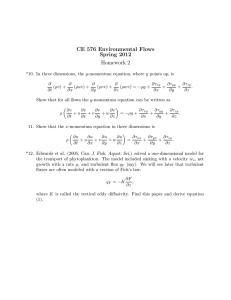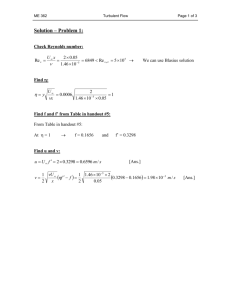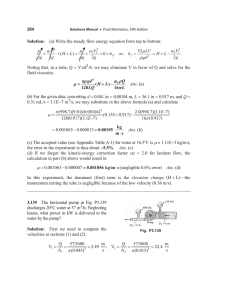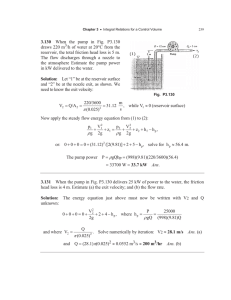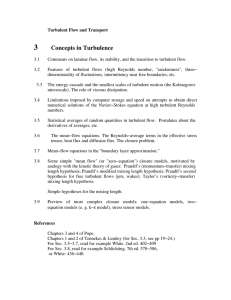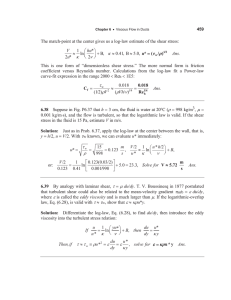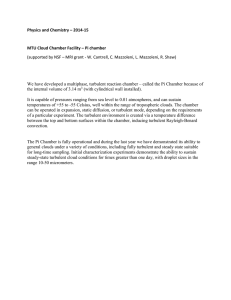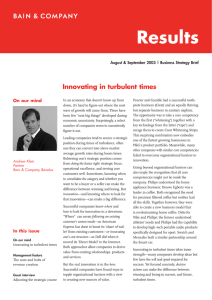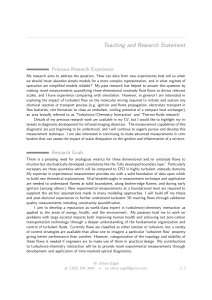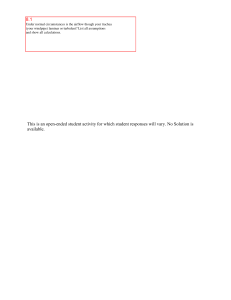P U
advertisement
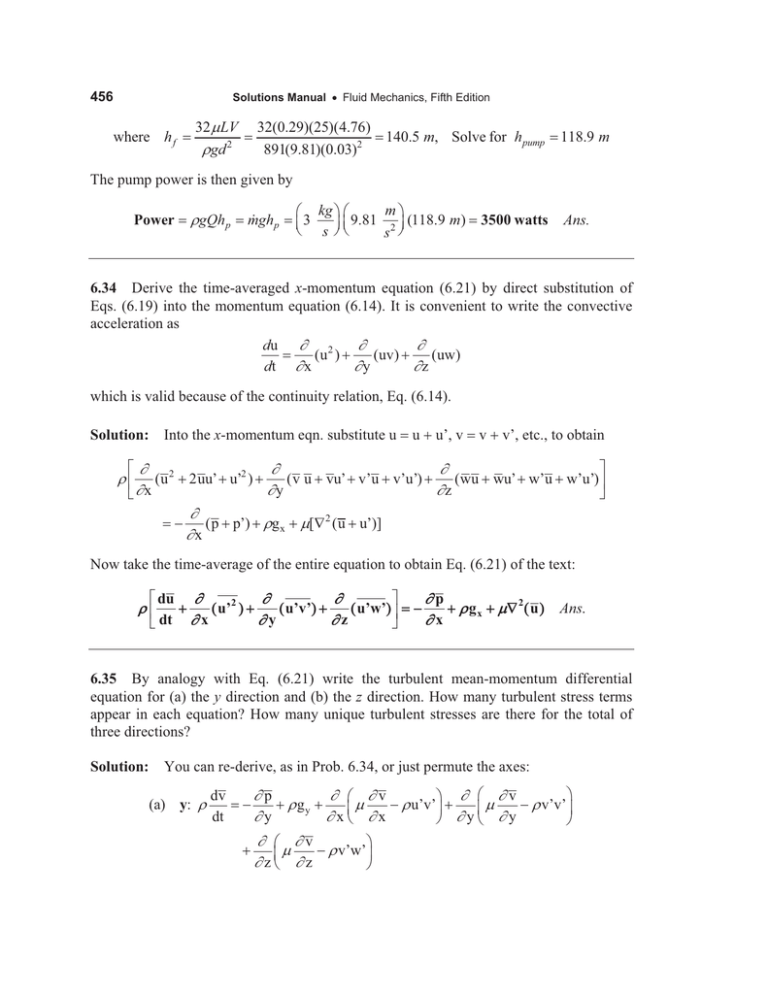
456 Solutions Manual x Fluid Mechanics, Fifth Edition where h f 32 P LV Ugd 2 32(0.29)(25)(4.76) 140.5 m, Solve for h pump 891(9.81)(0.03)2 118.9 m The pump power is then given by U gQh p Power p mgh m· § kg · § ¨© 3 ¸¹ ¨© 9.81 2 ¸¹ (118.9 m ) s s 3500 watts Ans. 6.34 Derive the time-averaged x-momentum equation (6.21) by direct substitution of Eqs. (6.19) into the momentum equation (6.14). It is convenient to write the convective acceleration as du w 2 w w (u ) (uv) (uw) dt w x wy wz which is valid because of the continuity relation, Eq. (6.14). Solution: Into the x-momentum eqn. substitute u u u’, v v v’, etc., to obtain ªw 2 º w w (u 2uu’ u’2 ) (v u vu’ v’u v’u’) (wu wu’ w’u w’u’) » wy wz ¬wx ¼ U« w (p p’) Ug x P[ 2 (u u’)] wx Now take the time-average of the entire equation to obtain Eq. (6.21) of the text: ª du w º w w u’2 u’v’ u’w’ » wy wz ¬ dt w x ¼ U« wp U g x P 2 u Ans. wx 6.35 By analogy with Eq. (6.21) write the turbulent mean-momentum differential equation for (a) the y direction and (b) the z direction. How many turbulent stress terms appear in each equation? How many unique turbulent stresses are there for the total of three directions? Solution: You can re-derive, as in Prob. 6.34, or just permute the axes: (a) y: U dv dt · wp w § wv · w § wv U gy U u’v’¸ U v’v’¸ ¨P ¨P wy wx© wx ¹ wy© wy ¹ w § wv · U v’w’¸ ¨P wz© wz ¹
